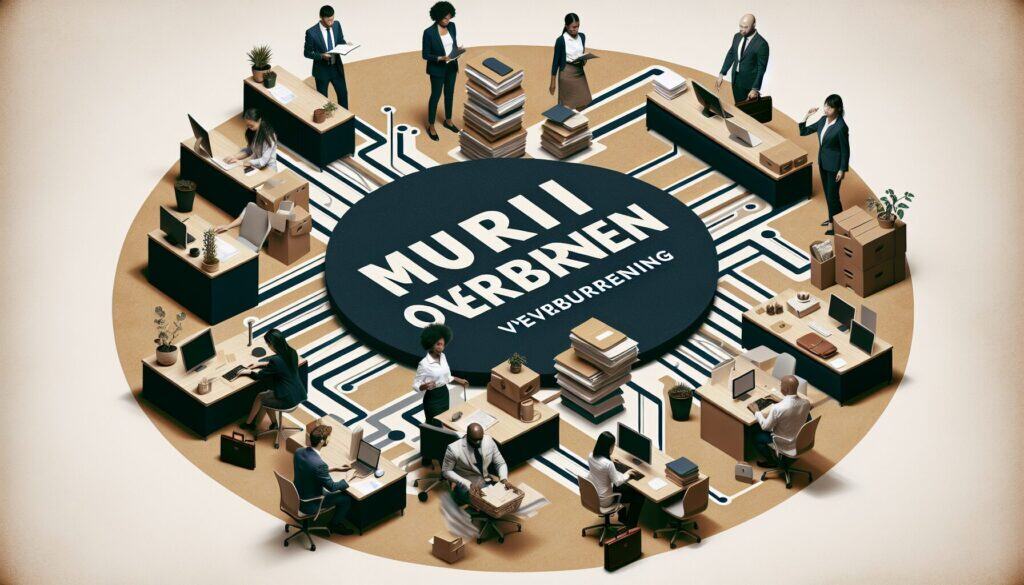To prevent the overburdening of employees, equipment, and systems beyond their designed capacity.
- Methodologies: Customers & Marketing, Ideation, Product Design
Muri (Overburden)

Muri (Overburden)
- Continuous Improvement, Ergonomics, Human Factors, Lean Manufacturing, Process Improvement, Productivity, Quality Management, Safety, Training
Objective:
How it’s used:
- A Lean concept focused on ensuring that work demands are reasonable and do not excessively strain resources. This involves proper work design, training, ergonomic considerations, and standardized work.
Pros
- Improves employee well-being and safety; Reduces breakdowns and defects caused by excessive strain; Enhances long-term productivity and sustainability; Leads to better quality.
Cons
- Identifying "overburden" can be subjective; Reducing Muri might sometimes appear to reduce short-term output if processes are not also improved to handle the load efficiently; Requires careful workload balancing and process design.
Categories:
- Ergonomics, Human Resources, Lean Sigma, Manufacturing, Quality
Best for:
- Ensuring sustainable and safe operations by designing work systems that avoid excessive stress on people and machinery.
Muri, or the concept of overburden, finds its application across various industries such as manufacturing, healthcare, and construction, where excessive workload can lead to operational inefficiencies. The methodology is particularly beneficial in the project phases involving work design and system implementation, facilitating a comprehensive evaluation of existing job structures and identifying areas prone to overburden. It is frequently initiated by team leaders and project managers but ideally involves cross-functional collaboration among engineers, safety officers, and human resources specialists to ensure a holistic approach. Ergonomic assessments play a pivotal role in this methodology, allowing for the redesign of workstations and processes to accommodate human capabilities and limitations, which is crucial in minimizing the physical strain on workers. Training programs focused on efficient work practices, safety protocols, and stress management can be developed as part of Muri implementation, further enhancing employee morale. In sectors such as healthcare, where worker fatigue can critically affect patient care, the adoption of Muri often leads to improved job satisfaction and reduced turnover rates. By mitigating strain on both personnel and machinery, organizations can expect a decrease in equipment malfunctions and product defects, thereby bolstering quality control efforts. This enhances sustainability as businesses operate more efficiently and reduce waste, contributing positively to their long-term goals. Ultimately, engaging in Muri not only promotes a safer work environment but also aligns with lean manufacturing principles that prioritize value creation while minimizing unnecessary resource consumption.
Key steps of this methodology
- Identify tasks that lead to overburdening and analyze their impact on resources.
- Redesign workflows to eliminate unnecessary steps and reduce workload.
- Implement ergonomic assessments to minimize physical strain on workers.
- Standardize work processes to ensure consistency and minimize variations.
- Provide targeted training to enhance skills and efficiency in task execution.
- Monitor the work environment regularly for signs of overburdening and make adjustments as needed.
- Encourage feedback from employees regarding workload and operational challenges.
Pro Tips
- Implement real-time monitoring systems to gauge workload and stress levels, adjusting tasks dynamically to prevent overburden.
- Develop cross-training programs that enhance skill versatility, enabling employees to shift tasks without excess strain or downtime.
- Incorporate feedback loops from workers to identify inefficiencies and improve task design, fostering a culture of continuous improvement.
To read and compare several methodologies, we recommend the
> Extensive Methodologies Repository <
together with the 400+ other methodologies.
Your comments on this methodology or additional info are welcome on the comment section below ↓ , so as any engineering-related ideas or links.
Historical Context
1950
1958
1960
1960
1960
1960
1963
1950
1950
1960
1960
1960
1960
1962
1970
(if date is unknown or not relevant, e.g. "fluid mechanics", a rounded estimation of its notable emergence is provided)















Related Posts
Musculoskeletal Discomfort Questionnaires
Multivariate Testing (MVT)
Multiple Regression Analysis
Motion Capture Systems
MoSCoW Method
Mood’s Median Test